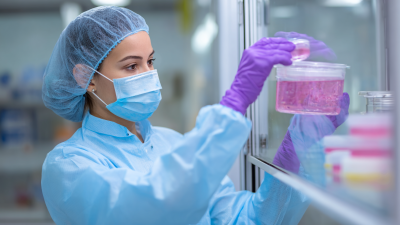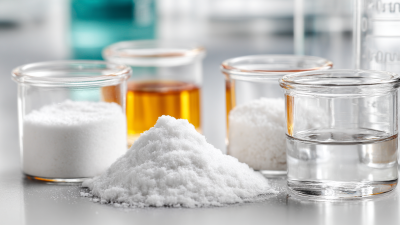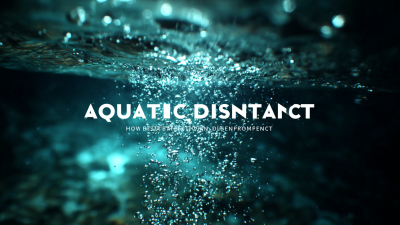In the ever-evolving field of aquaculture, maintaining optimal health and growth of aquatic species is paramount, and the selection of the right disinfectant plays a critical role in this process. According to the latest report from the Aquatic Health Journal, improper sanitation can lead to a 30% increase in mortality rates among farmed fish, underscoring the need for effective disinfection practices. As highlighted by Dr. Emily Carter, a leading expert in aquaculture biosecurity, "The choice of disinfectant for aquaculture operations not only impacts the health of the stock but also influences overall productivity and sustainability."
With the global aquaculture industry projected to reach over $200 billion by 2025, ensuring the quality of farmed aquatic species through proper health management strategies has become more crucial than ever. The right disinfectant can mitigate pathogens, reducing the incidence of disease outbreaks that threaten fish health and farm yield. By integrating scientific insights and industry best practices, aquaculture practitioners can optimize their disinfection protocols. This article aims to provide actionable tips for selecting the best disinfectant for aquaculture, ensuring a thriving and sustainable aquatic environment.

In aquaculture, maintaining water quality and ensuring the health of aquatic species is paramount. Choosing the right disinfectant can help achieve optimal health and growth while preventing disease outbreaks.
Common types of disinfectants used in aquaculture include chlorine, iodine-based solutions, and peracetic acid. Each of these has its specific applications and effectiveness against various pathogens.
Chlorine is widely used due to its strong bactericidal properties, making it effective against a broad spectrum of microorganisms. However, it must be carefully controlled to avoid toxicity to fish. Iodine-based disinfectants are favored for their residual effects and effectiveness in preventing biofilm formation. They are particularly useful in hatcheries and nurseries where disease control is critical. Finally, peracetic acid offers a potent alternative with a fast-acting mechanism and minimal environmental impact, making it suitable for systems where chemical residues must be minimized.
Understanding these disinfectants' characteristics and applications is essential for optimizing health and growth in aquaculture operations.
Effective disinfection in aquaculture is crucial for minimizing pathogen resistance and promoting optimal health and growth in aquatic organisms. Research indicates that up to 60% of fish diseases are linked to resistant pathogens, significantly impacting yield and quality (FAO, 2020). Understanding the dynamics of pathogen resistance is essential for aquaculture producers, as resistant strains can proliferate in heavily stocked environments, leading to increased mortality rates and reduced growth rates.
Choosing the right disinfectant involves evaluating its efficacy against a broad spectrum of aquatic pathogens, including viruses, bacteria, and protozoa. A recent report highlighted that certain quaternary ammonium compounds can significantly reduce pathogen loads by up to 90% when used correctly (AquaFarm Reports, 2021). Additionally, the ability of a disinfectant to maintain its effectiveness in the presence of organic matter is vital, as residues can hinder its performance.
Select disinfectants not only combat existing pathogens but also contribute to long-term biosecurity strategies by preventing the establishment of resistant organisms, ensuring healthier stocks and sustainable production.

In the rapidly evolving field of aquaculture, evaluating the efficacy of disinfectants is crucial for ensuring optimal health and growth of aquatic species. Key metrics in assessing disinfectant performance include bactericidal activity, contact time, and compatibility with aquatic ecosystems. Recent research has highlighted the importance of peracetic acid in reducing populations of specific bacterial pathogens within recirculating aquaculture systems (RAS). Understanding how such disinfectants interact with pathogens can help aquaculture producers make informed decisions, ultimately leading to healthier stocks and improved yields.
The RASHealth project aims to not only pave the way for advanced aquaculture technologies but also nurture a new generation of scientists equipped to tackle challenges in the industry. As producers increasingly adopt disinfectants like peracetic acid, ongoing assessment of their efficacy against emerging pathogens becomes essential. This proactive approach is vital for maintaining biosecurity and ensuring the sustainability of aquaculture practices, allowing for better management of fish health and enhancement of growth outcomes.
In the quest for effective aquaculture management, the environmental impact of disinfectants is becoming increasingly critical. Sustainable disinfectant options are essential to promote not only the health of aquatic species but also the integrity of ecosystems. When selecting a disinfectant for aquaculture operations, factors such as biodegradability, toxicity to non-target organisms, and potential for bioaccumulation must be considered. Disinfectants that break down into harmless byproducts help mitigate the risk of long-term environmental damage while ensuring that aquatic habitats remain viable.
Moreover, the use of plant-based and naturally derived disinfectants presents an innovative solution to traditional harsh chemicals. These alternatives not only reduce the chemical load in water bodies but also align with eco-friendly practices that are gaining traction within the industry. By focusing on sustainable disinfectants, aquaculture operations can enhance the health and growth of aquatic life while actively contributing to the preservation of their surrounding environments. Implementing these strategies fosters a balanced approach, ensuring that aquaculture thrives without compromising ecological integrity.
When selecting a disinfectant for aquaculture, compliance with regulatory standards is paramount. Various international, national, and local regulations govern the use of disinfectants to ensure they meet safety and efficacy requirements. Aquaculture operators must carefully evaluate the active ingredients in disinfectants, confirming that they are approved for use in aquatic settings. This includes considering the potential impact on both target organisms and surrounding ecosystems, as certain chemicals can be harmful to aquatic life if not used correctly.
In addition to regulatory compliance, safety is a critical consideration in the selection process. Disinfectants must not only effectively eliminate pathogens but also minimize risks to fish health and the environment. Operators should choose products that have undergone rigorous testing for safety in aquaculture systems, ensuring that they do not leave harmful residues that could affect fish growth or survival. By prioritizing regulatory compliance and safety, aquaculture professionals can foster optimal health and growth rates for their aquatic species, ultimately enhancing productivity and sustainability in their operations.







